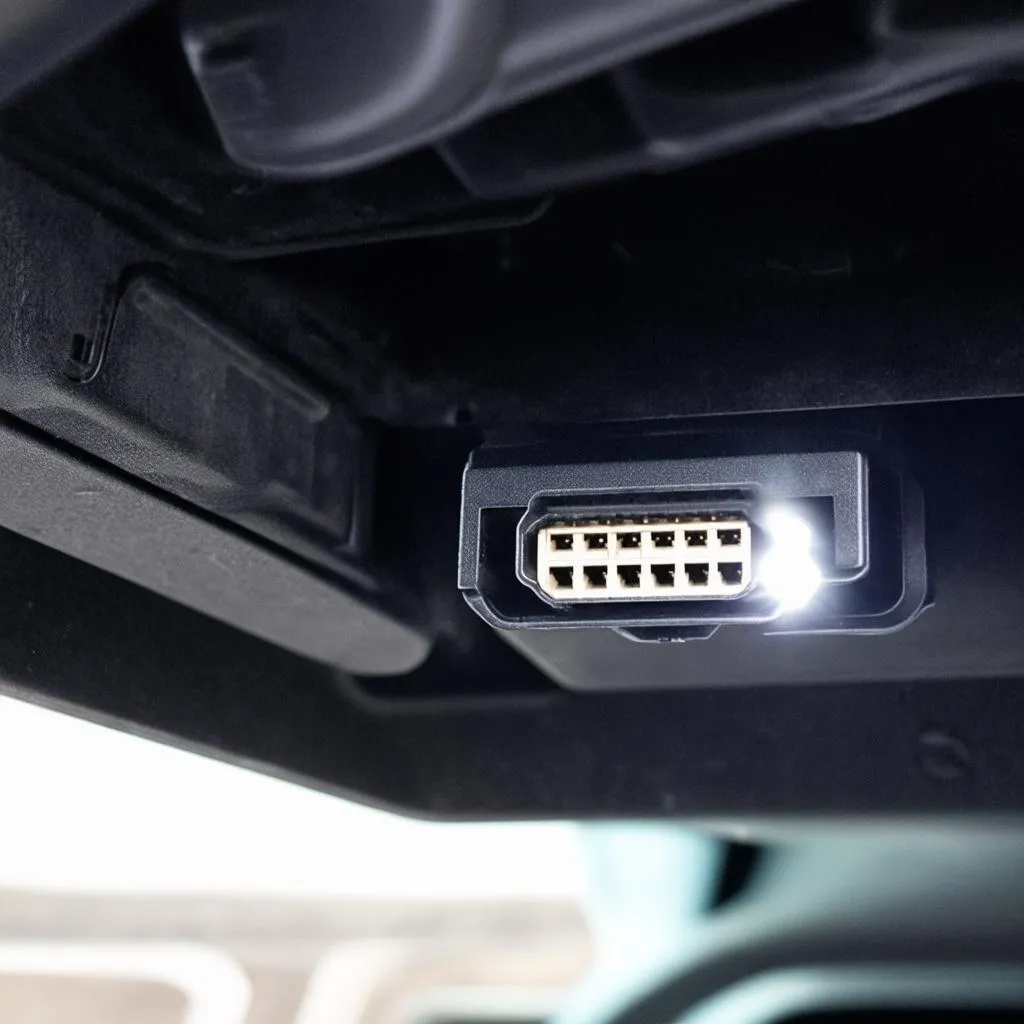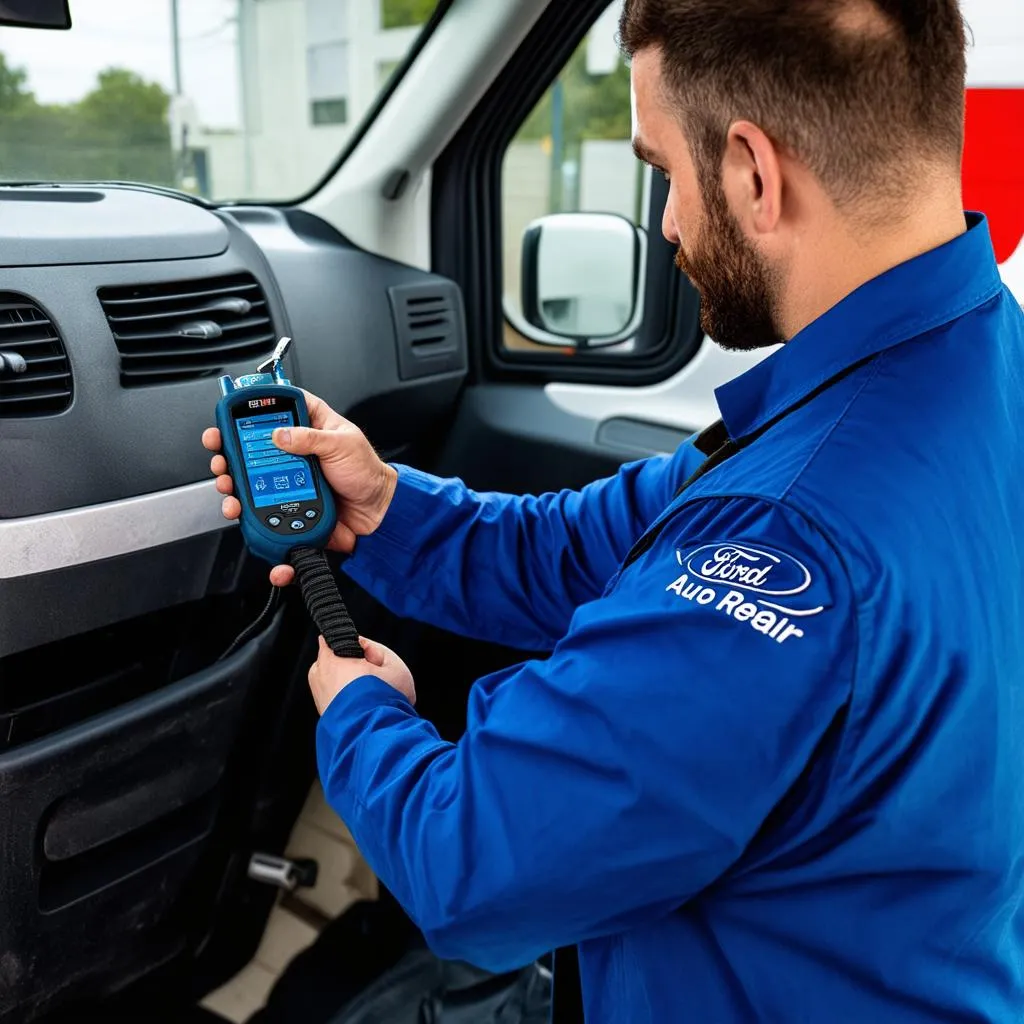You’re driving down a California highway, the sun shining off the Pacific, when suddenly your Ford Transit’s check engine light pops on. You pull over, heart sinking, knowing a trip to the mechanic is inevitable. But wait! What if you could diagnose the problem yourself? This is where the OBD port comes in.
But finding this elusive port in your Ford Transit can sometimes feel like searching for the Lost City of Atlantis. Don’t worry, fellow Transit owner, we’ve all been there. This article will guide you step-by-step to OBD enlightenment.
What’s the Deal with OBD Ports Anyway?
Before we embark on our treasure hunt, let’s understand what makes the OBD port so important.
From a mechanic’s perspective, the OBD (On-Board Diagnostics) port is like a window into your vehicle’s soul. It allows mechanics and DIY enthusiasts alike to communicate with the car’s computer, reading error codes, monitoring performance data, and even programming certain components.
Technically speaking, the OBD port is a standardized 16-pin connector that allows a diagnostic tool, such as a dealer-level scanner for European cars, to communicate with the various electronic control units (ECUs) in your Ford Transit.
Economically, understanding and utilizing your OBD port can save you a lot of money in the long run. Early detection of issues can prevent minor problems from becoming major headaches and costly repairs.
Unveiling the Mystery: Where is the OBD Port in a Ford Transit?
For most Ford Transit models, the OBD port is located under the dashboard, on the driver’s side, near the steering column. It’s usually concealed by a small, removable panel.
Here’s a more specific breakdown based on model years:
- Ford Transit (2015-present): Look for the OBD port below the steering wheel, near the hood release lever.
- Ford Transit (2010-2014): You’ll likely find it under the dashboard to the left of the steering column.
Still can’t find it? Don’t panic! Your owner’s manual is your best friend in this situation. It will usually have a diagram indicating the exact location of the OBD port.
 Ford Transit OBD Port Location
Ford Transit OBD Port Location
Common Ford Transit OBD Port Questions
Here are some frequently asked questions about Ford Transit OBD ports:
Q: What if I can’t find my OBD port?
A: Double-check your owner’s manual. If you’re still having trouble, consider contacting your local Ford dealership for assistance.
Q: Can I use any OBD scanner with my Ford Transit?
A: While generic OBD scanners can read basic codes, investing in a higher-end scanner or one specifically designed for Ford vehicles will give you more detailed information and functionality.
Q: Can I damage my car by using the OBD port?
A: As long as you’re using a compatible scanner and following instructions, using the OBD port is generally safe.
 Using an OBD Scanner on a Ford Transit
Using an OBD Scanner on a Ford Transit
Need More Help with Your Ford Transit?
We understand that dealing with car troubles can be stressful. Finding the OBD port is just the first step. If you need further assistance with your Ford Transit’s electrical system, don’t hesitate to reach out. Our team of automotive experts is available 24/7 to provide guidance and support. You can contact us via Whatsapp at +84767531508 for help with installing diagnostic software or troubleshooting any issues you might encounter.
You might also find these articles helpful:
- Ford Transit Connect OBD Port Location
- Ford Transit OBD Fuse Location
- 1994 Acura Integra OBD Location
Keep Your Ford Transit Running Smoothly
Remember, proactive maintenance is key to a long and happy life for your Ford Transit. Regularly checking your vehicle’s systems, understanding the error codes, and addressing issues promptly will keep you on the road and out of the repair shop. Safe travels!